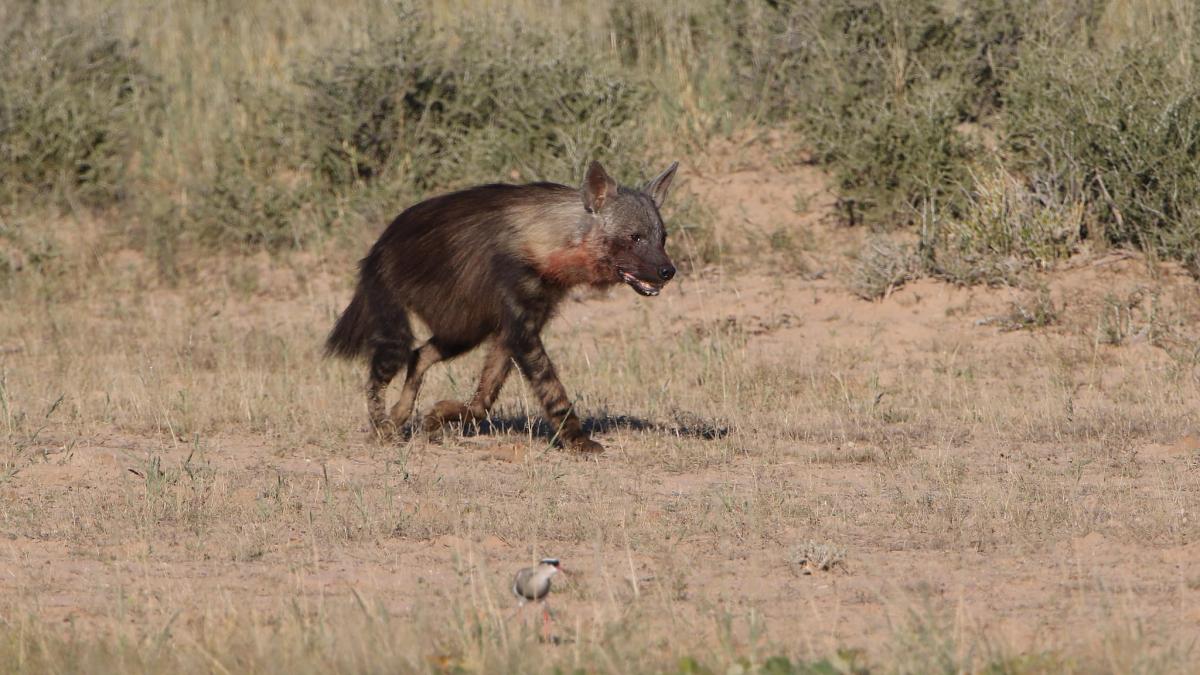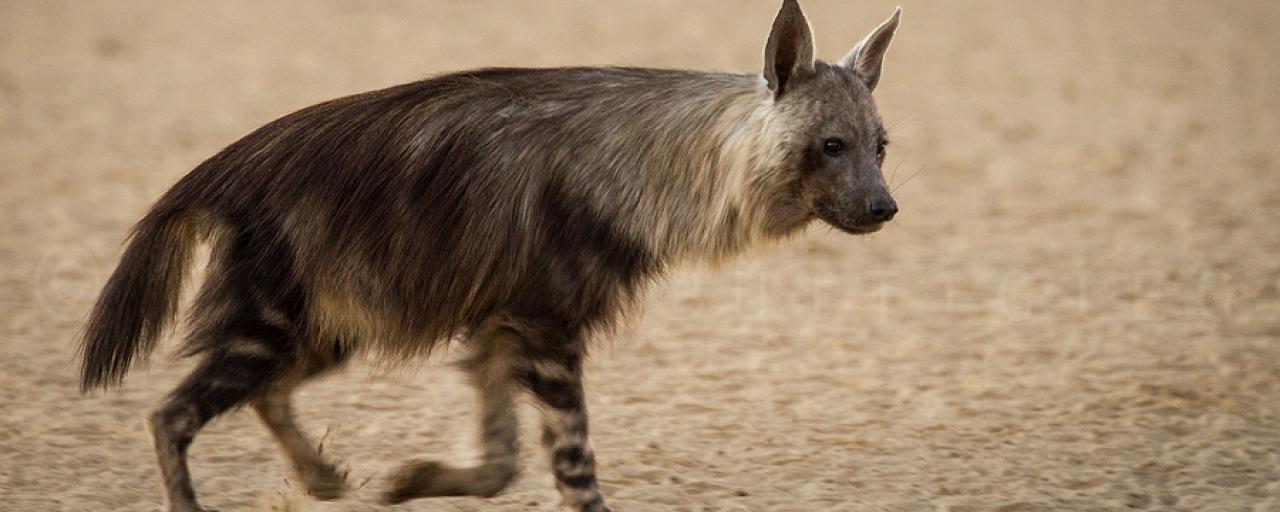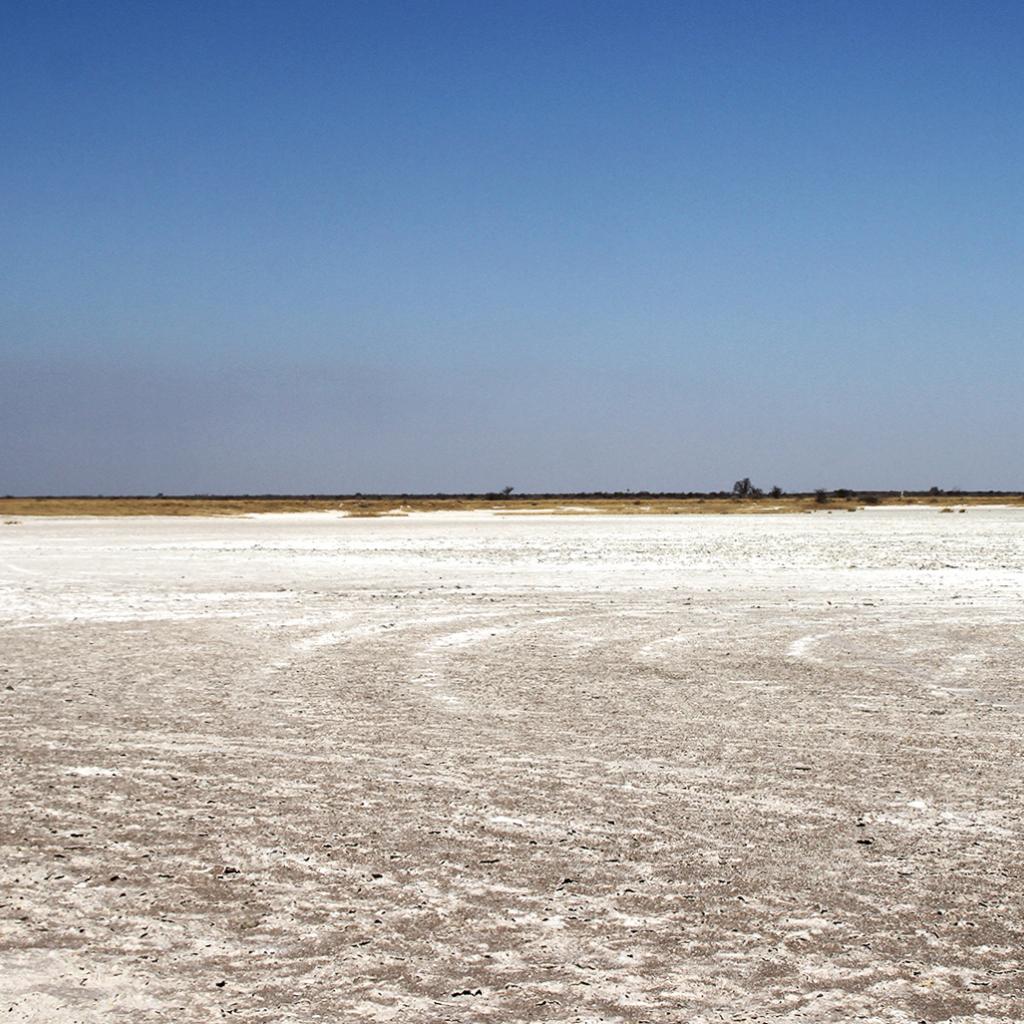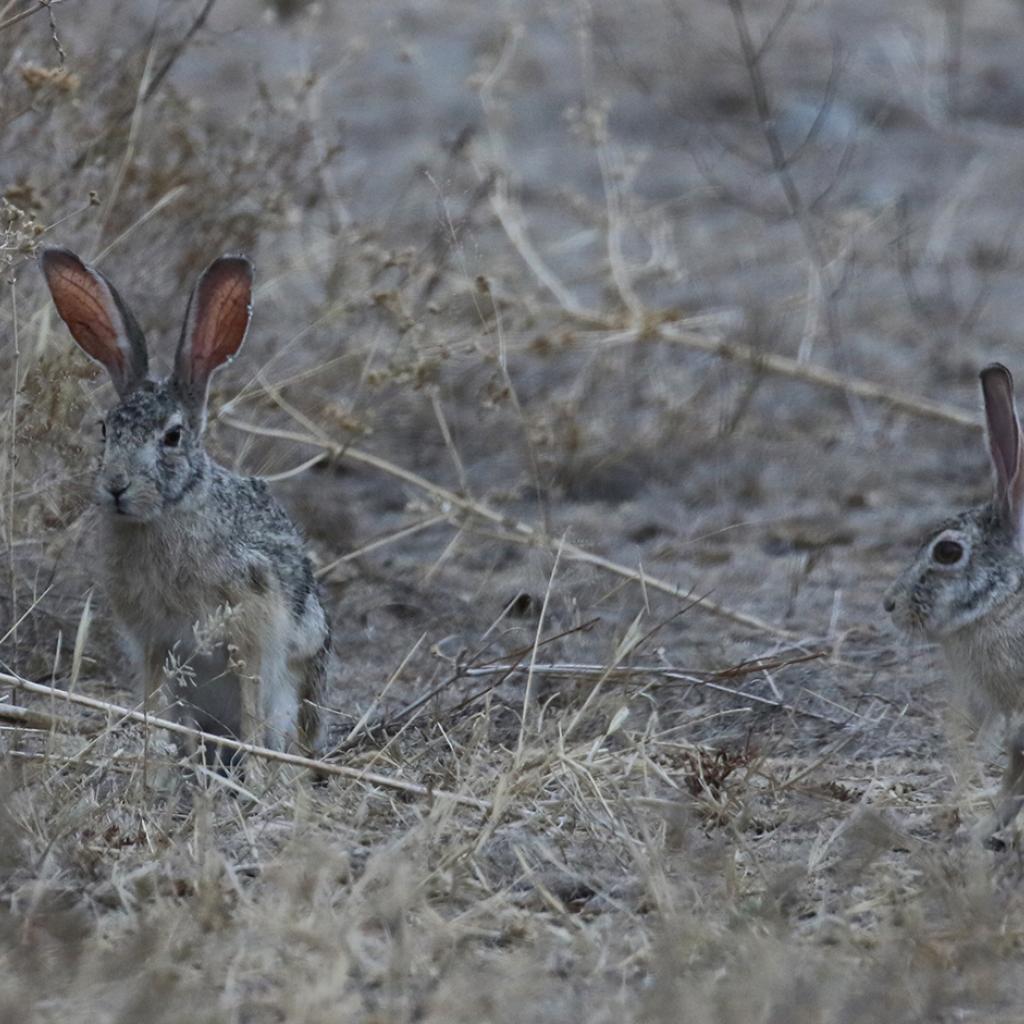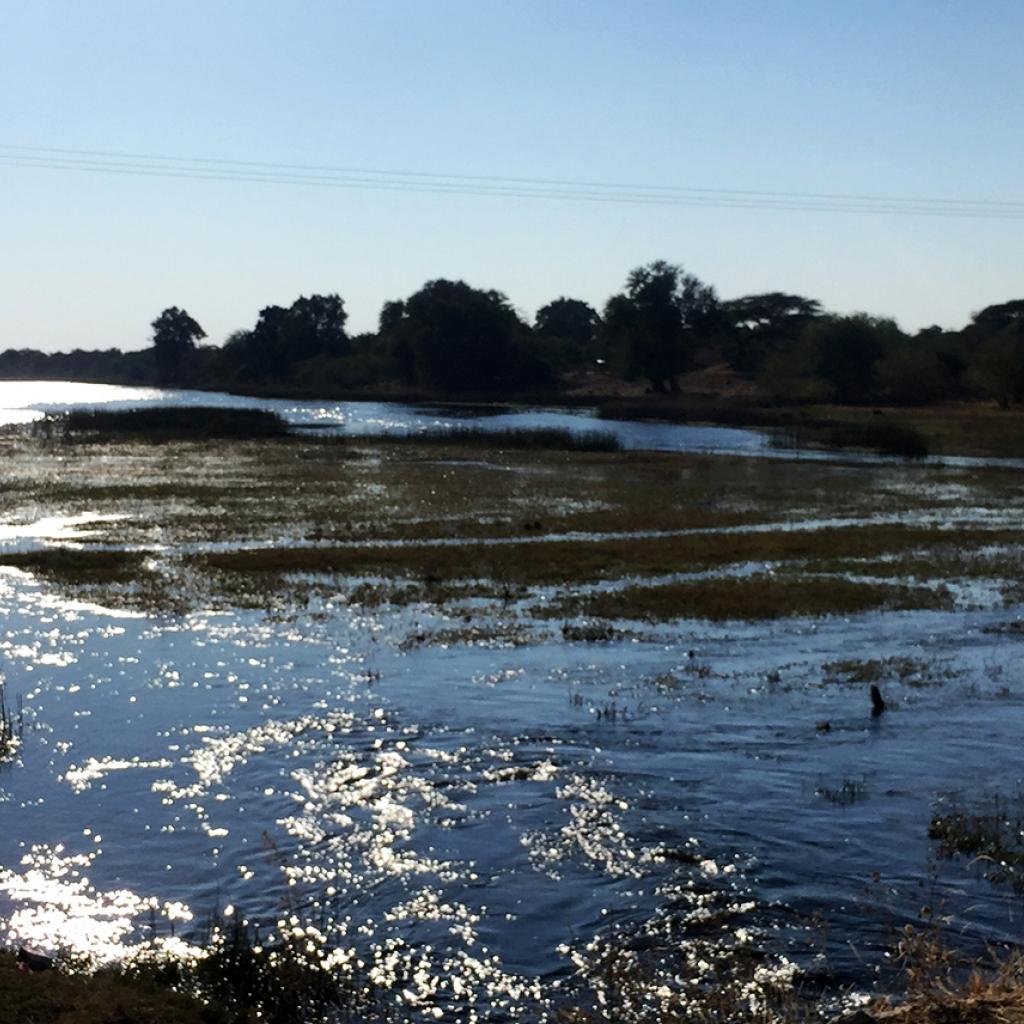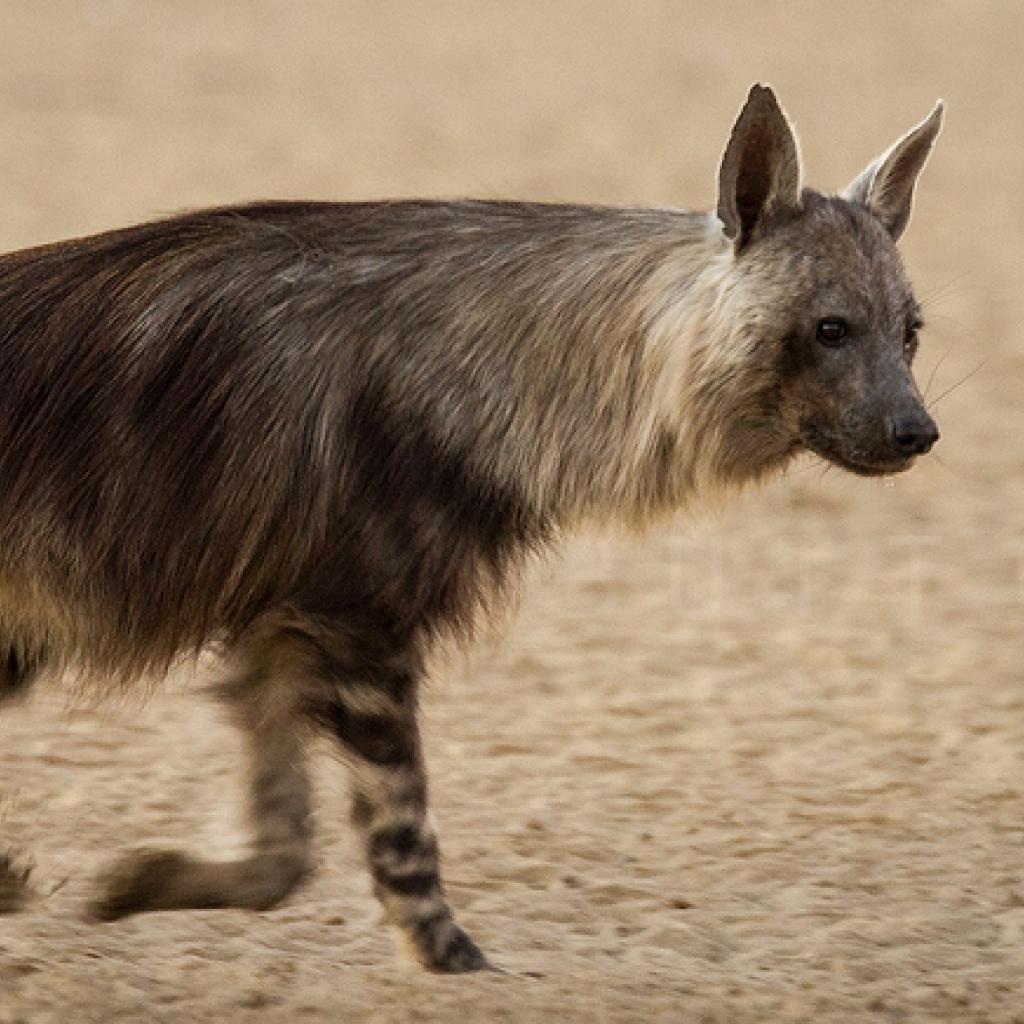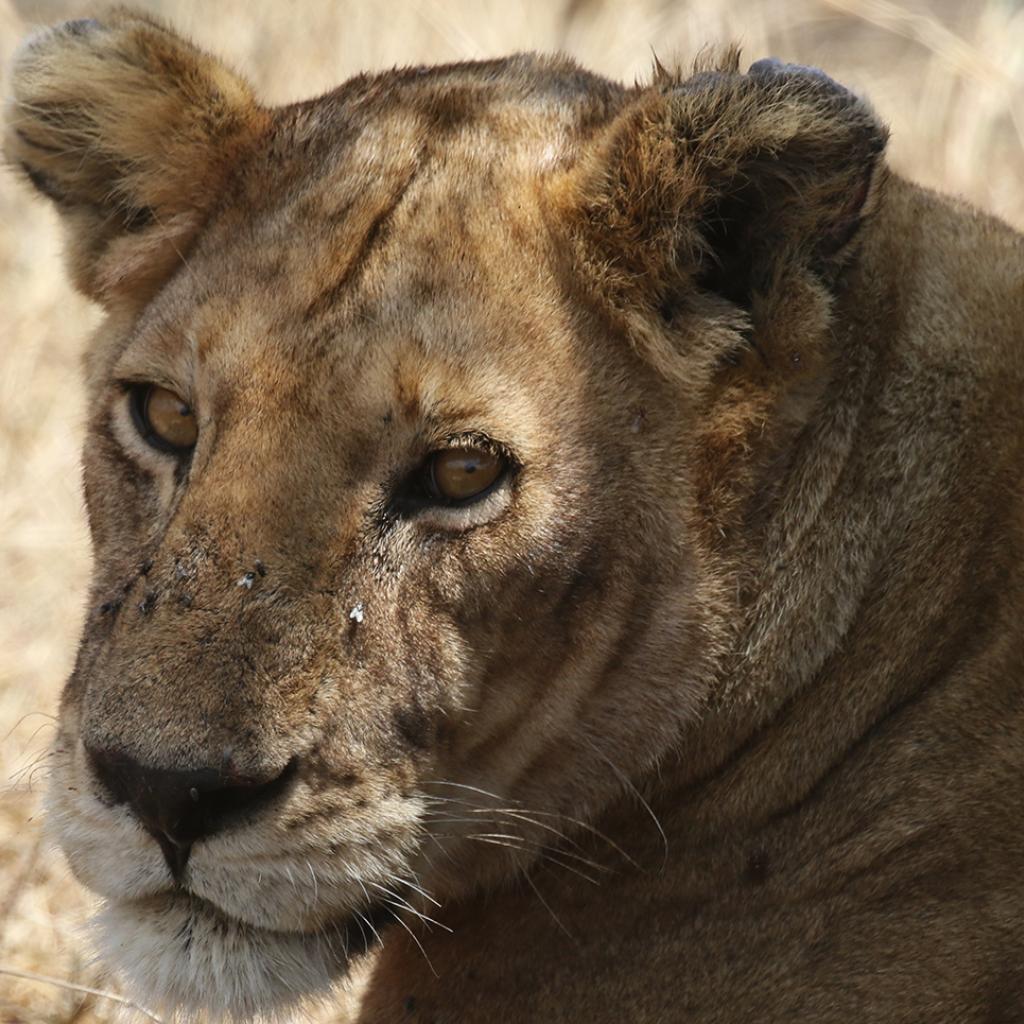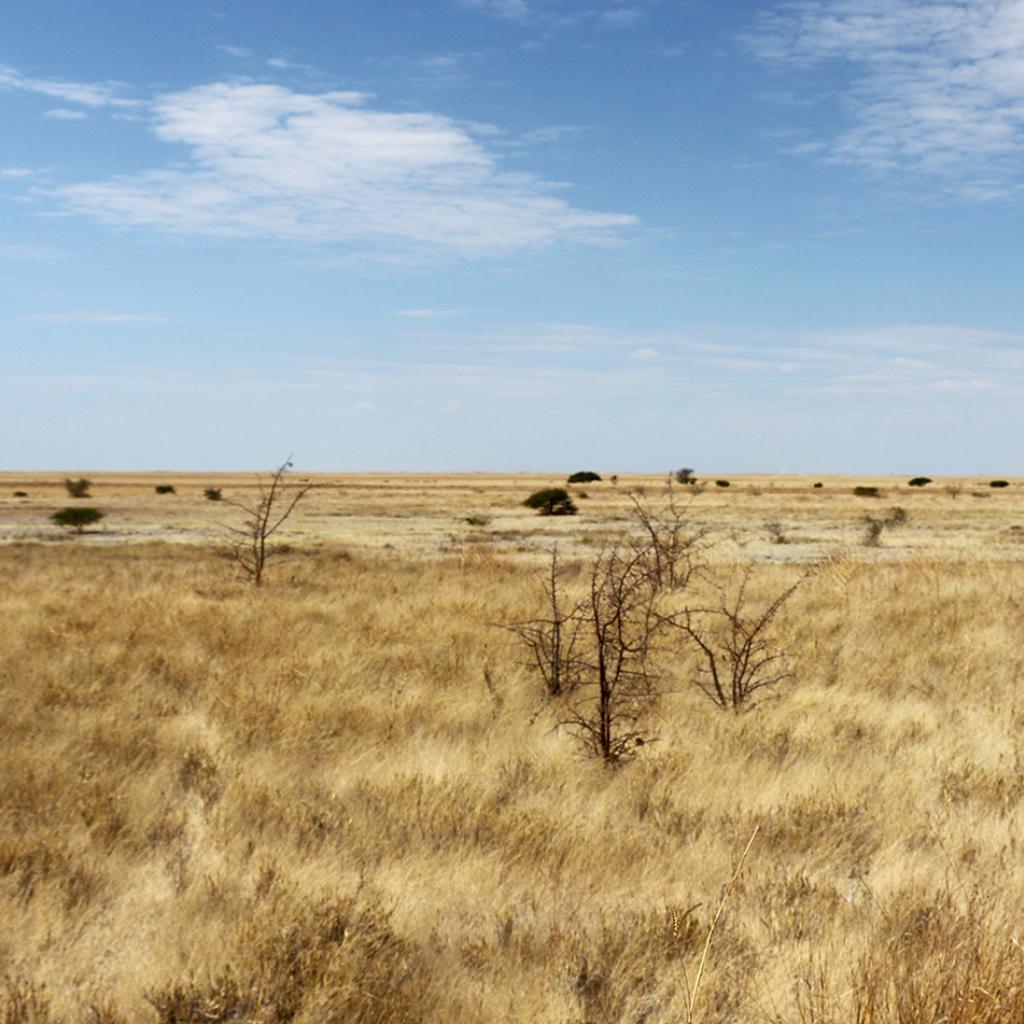The brown hyena is one of the three species of hyenas present in Africa, the other two are the striped hyena, present in Eastern and Northern Africa, and the spotted hyena, present throughout the Sub-Saharan Africa.
There are only 10,000 specimens of brown hyena all over South Africa and this categorizes it as close to the threat of extinction; the Makgadikgadi National Park, in Botswana, is estimated to have 150 specimens.
The brown hyena has adapted to live in arid areas, it is a night and shy animal and usually goes lonely looking for food, and not in groups as does spotted hyena, and it is not strictly dependent on water.
In theory it has a very varied diet, it can eat anything, except vegetation obviously; its nutrition can go from animal carcasses to ostrich eggs to melons and to scorpions.
In 2003, in the Makgadikgadi National Park near the Jack's Camp, a research project, the Makgadikgadi Brown Hyena Project, was established to study this elusive feline and to understand better how to protect it from the threat of extinction.
The research project was devoted to studying food supply techniques, how brown hyenas mark the territory, the area and the resources they need.
The study also covered the effects that the veterinarian fence had on the population of brown hyenas living on both sides of the fence itself.
The research showed that some specimens often went up to 65 km per night to look for food in the Makgadikgadi and that the carcasses of the lions’ prey were an important source of food for brown hyenas, especially during the rainy season, when zebras and wildebeests are present in large numbers; during the dry season, the sources of food are scarce, and hence the brown hyenas mainly eat carcasses of livestock and other animals.
It has been found that brown hyenas are not completely solitary animals but live in clans composed of 2 to 10 members; the territory of the clan is very wide, ranging from 200 sq km to 1,000 sq. km, but rarely, within this territory, the specimens of the same clan are together.
Sometimes they interact with other clans for food, when they converge in the same place, or when they build common den sites.
Some hyenas, predominantly males, are not part of a clan but are nomads; members of a clan are tolerant of invasions by another specimen, if it belongs to the opposite sex, and if it belongs to the same sex, they may decide to tackle it.
The brown hyenas, unlike the spotted hyenas, are virtually silent, their vocalization is minimal; the only form of communication they use for long distances is the smell of secretions used to demarcate the territory, that are deposited on grass stems; the territory is marked every 150 meters, also to report the sources of food and to communicate with other members.
The feces are also used to demarcate the territory, and in some places they can be found in large quantities, this means that this is the boundary of a clan's territory.
It is not easy to spot these animals, it is easier to find on the ground traces of their passage.
